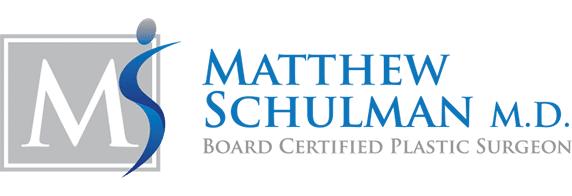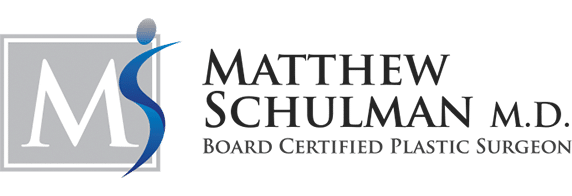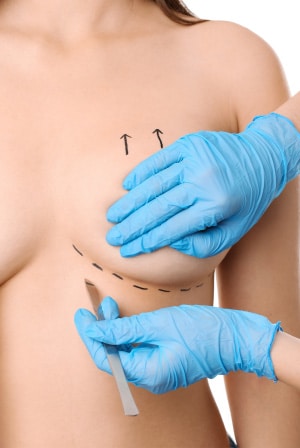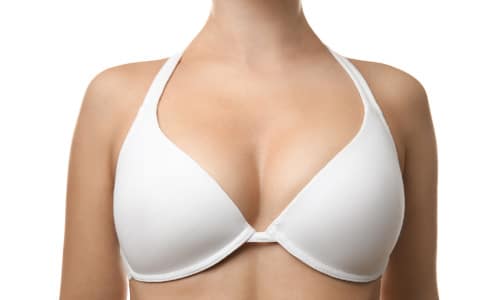One of the most popular procedures performed by Board Certified Plastic Surgeons is a breast lift surgery. There were over 120,000 breast lift surgery performed last year in the United States.
This is a procedure performed by 90% of all Board Certified Plastic Surgeons. The reason for it’s popularity is how powerful it is at transforming the body and erasing years off someone’s appearance.
Breast Lift Explained?
A breast lift, or mastopexy, is a procedure that lifts the breasts. It is intended to give a more youthful appearance to the breasts and reverse the sagging and drooping that often comes with aging, pregnancy, and weight loss. A breast lift surgery will:
- Removal of excess skin
- Lifting of sagging breasts
- Reduction in the size of areolas
- Creating more symmetry between breasts
Who is a Good Candidate for a Breast Lift?
Because a breast lift surgery is designed to lift breast tissue and create a more youthful appearance, anyone who feels like there breasts are sagging are a candidate. Breasts can sag and droop due to a variety of reasons. These include:
- aging
- pregnancy
- weight loss
- removal of breast implants
To know if you require a breast lift surgery, you need to look at the position of your nipples. If your nipples are below your breast fold, then this means that you have breast droop, or ptosis, and are a candidate for a breast lift.
If you feel like your breasts are droopy, but your nipples are still above your breast fold, than you likely have breast involution and a breast augmentation vs. breast lift may be what you need.
Preparation for Your Breast Lift
The first step is an evaluation by a Board Certified Plastic Surgeon, experienced in a breast lift procedure. During your evaluation, your surgeon will take your medical history and perform a physical examination.
He or she will specifically examine your breasts, looking carefully at the amount of excess skin, the quality of that skin, underlying breast tissue, and signs of asymmetry. Your surgeon will also make sure that there is not a personal or family history of breast problems, such as cancer.
Your surgeon will also discuss the required incisions and resulting scars for your breast lift. These incisions will depend on exactly what needs to be done for you and how much your breasts need to be lifted. Small lifts often only require incisions around the areola, while larger lifts may require incisions around the areolas, down the front of the breast, and underneath (like an anchor).
Some may require something in between. Your surgeon will also discuss whether you also require an adjustment in the volume of your breast, either with an enlargement or a reduction.
If you are an appropriate candidate for the procedure, your surgeon will discuss specific details about the anesthesia, recovery, and scars. He or she will also discuss the risks associated with this breast lift procedure. You will also be sent for medical clearance with your primary medical doctor.
This will include a physical examination, bloodwork, and an EKG, along with any other tests required to make sure you are healthy enough to undergo the surgery. If you are over 40 years old, you will be required to have a mammogram as part of your pre-operative medical clearance.
 Where is the Procedure Performed?
Where is the Procedure Performed?
A breast lift is a surgical procedure that needs to be performed in an accredited surgery center or hospital. These are regulated facilities with the appropriate safety standards and appropriately trained staff.
The procedure is usually performed on an out-patient basis, meaning, you are able to go home the same day. In situations where other procedures are being done at the same time, you may be required to stay overnight for monitoring.
The Surgery
The Anesthesia
The procedure is performed under intravenous sedation or general anesthesia. This anesthesia is administered by a Board Certified Anesthesiologist and you will be monitored the entire time. You breathing and heart rate will be monitored, as well as your oxygen level.
The Incision
A breast lift is performed with a variety of incisions. These incisions are used to remove skin, reshape the internal breast tissue, and move the nipple. The incisions are important because it is the incisions that ultimately determine the scars that will be left.
The incisions that you need will depend on exactly what needs to be done and how much lift you require. The typical incisions include:
- Around the areola (circumareolar)
- Around the areola and down the from (“lollipop”)
- Around the areola, down the front, in the fold (“Anchor”)
Sometimes, a different incision is needed on each breast, since many breasts start out different from each other. Your surgeon will be able to tell you during your consultation, which incision he or she thinks you will need. Your surgeon can also draw the planned incision on you so you can visualize where the scar will be located and how long it will be.
Reducing the size of the areola
One of the first things that will be done during your breast lift, is reducing the size of the areola. The areola tends to enlarge with aging, weight loss, pregnancy, and breast droop. Your surgeon will use a template, called a “cookie cutter”, that will mark a perfectly round circle on your original areola. This new shape and size will be smaller and rounder. This will also allow both areolas to be made the same shape and size. After marking the areolas with this “cookie cutter”, your surgeon will use a knife to cut along the marks.
Removing the Skin
The excess and loose skin of the breast is also marked and removed. By doing this, the breast will be more perky and lifted when things are put back together. Depending on the amount of lift that is needed, skin can be removed from around the areola, down the front of the breast, and along the bottom.
Reshaping the Internal Breast Tissue
While breast skin needs to be removed and this does play a role in the result, the skin can’t do it all. In fact, the breast skin has already proven that it cannot support the breast tissue, which is why you need the lift. The real key to a beautiful and long-term result from your breast lift is reshaping the internal breast tissue. After the skin is removed, the breast tissue is reshaped using a combination of removal of breast tissue and internal sutures. Your surgeon will basically reshape your breast tissue into the shape of a breast implant.
Closing the Skin and Raising the Nipple
Next the skin is closed over this newly shaped breast tissue. The breast will have a rounded shape. The nipple and areola will be slid up to a higher location and closed with sutures.
Breast Lift Recovery
After a few hours in the recovery room, you will be discharged home. You will have pain medication and antibiotics. This procedure is very well tolerated and the pain is significantly less than with other procedures like a tummy tuck. You will wear a supportive bra, such as a sports bra. After about a week, most people feel pretty good and you will be cleared to return to normal activities, including work and school. You will be restricted from heavy exercise for about 3-4 weeks while you are healing.
Scar Management
Scars never go away, but they will fade. Special care is taken during your surgery to promote good healing and the best possible scar. However, everyone’s skin is different and creates different scars. Some scars are thin and flat, while others are raised and dark. Your Board Certified Plastic Surgeon should be able to assess your skin before surgery in order to determine the types of scar you are likely to produce. In general, the darker the skin, the higher the possibility of thick and dark scars.
If you have a history of making “bad” scars, be sure to let your surgeon know about that so proper precautions can be made. There are some things that can be done after the surgery to help your body create better scars These include the early use of silicone scar gels or tapes, and laser treatments. Your scar will continue to evolve over the next 9-12 months. During this time, you should limit the exposure to the sun since UV rays can make the scar appear more red and irritated.
Combining a Breast Lift with Other Procedures
It is very common to combine your breast lift with other procedures. Sometimes a breast lift is combined with breast implants if you want your breasts lifted AND larger. Also common is to combine your breast lift with a tummy tuck or liposuction. This is because all these parts are very susceptible to changes associated with aging, weight fluctuations and pregnancies. Combining multiple procedures together is commonly called a Mommy Makeover.
 Questions and Answers
Questions and Answers
How long does breast lift last?
Typically, women can relish the benefits of their breast lift for approximately 10-15 years, with some patients enjoying their breast lift results even longer before considering a revision.
How do they perform a breast lift?
Typically, breast lifts entail three incisions. The first encircles the areola, the dark skin surrounding the nipple. The second starts beneath the nipple and extends to the breast’s lower portion. The final incision follows the breast crease at the base. This process is how your obtain a more youthful breast contour.
How much does it cost to lift my breast?
The average cost of a breast lift can vary, but it’s important to note that this figure represents just a portion of the total expense. It does not encompass expenses such as anesthesia, operating room facilities, or other associated costs.
Contact Us Today
If you would like to learn more about lifting your breasts and making them appear more youthful, contact New York City Board Certified Plastic Surgeon, Dr. Matthew Schulman. During your consultation, you can find out if a breast lift is right for you .



 Where is the Procedure Performed?
Where is the Procedure Performed? Questions and Answers
Questions and Answers
